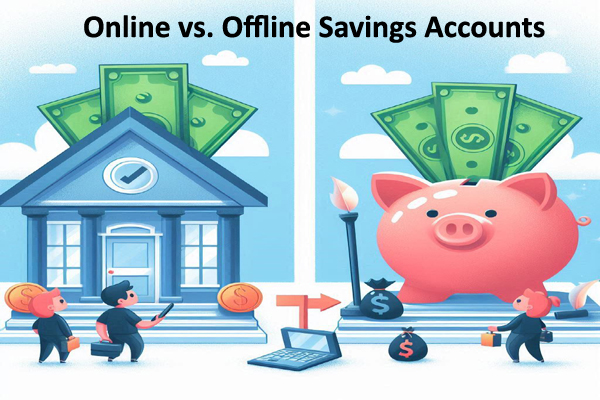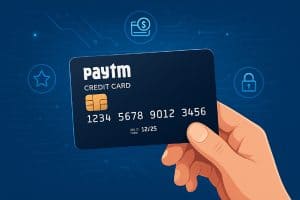
Making decisions about your money is more complex than ever. One of the most common dilemmas many people face is choosing between online and offline savings accounts. Both options have unique perks and drawbacks, and your choice largely depends on your needs, lifestyle, and comfort with technology.
In this blog, we will discuss the differences, benefits, and considerations for both so you can decide which option is better for you.
Table of Contents
Understanding Offline Savings Accounts
Offline savings accounts are the traditional way of banking. With these accounts, you have a physical branch where you can meet with a banker face-to-face, get personalized service, and quickly deposit or withdraw funds using ATMs. For many, this interaction builds trust and comfort. You can talk to someone directly about any concerns or questions, which can be incredibly reassuring during financial uncertainty.
However, offline banks may have some downsides—often, the interest rates offered are not as competitive, and maintaining a branch network can lead to higher fees and slower processes for routine transactions.
Embracing the Digital Revolution (Online Savings Account)
On the other hand, the digital age has created a new way of managing money. With a digital online savings account, the entire banking experience is accessible online. This means you can check your balance, transfer money, and even apply for loans from the comfort of your home or while on the go.
Many consumers now opt for a savings account online due to the convenience, competitive interest rates, and lower fees typically associated with digital banking platforms. These online services are smooth, user-friendly interfaces designed to simplify banking, making it accessible even to those not particularly tech-savvy.
One of the most compelling advantages of choosing a digital approach is the ability to access your funds 24/7. Whether planning frequent trips or managing your monthly budget, a savings account online means your money is always just a click away. Additionally, the competitive landscape of digital banks drives innovation—think real-time notifications, budgeting tools, and personalized financial advice, all available through a single app or website.
Comparing Pros and Cons
To help decide which type of savings account is correct for you, consider these factors:
- Accessibility: If you like visiting a local branch and talking to a person, offline accounts might be a better choice for you. On the other hand, if you’re comfortable with technology and value the flexibility of banking on your schedule, a digital savings account offers unbeatable convenience.
- Customer Service: While offline banking boasts the benefit of personal, face-to-face interactions, many digital banks are rapidly improving their customer service through live chat, video calls, and responsive support systems. It’s all about how you prefer to resolve your issues—do you want a quick digital response or a reassuring in-person conversation?
- Security: Both options are highly secure, but the peace of mind often associated with physically visiting a bank cannot be overlooked. Digital banks invest heavily in cybersecurity, yet some worry about data breaches or online scams. Research the security measures of your chosen provider, whether digital or offline, to protect your savings.
Conclusion
Ultimately, whether you opt for an offline or an online savings account depends on your personal preferences and financial goals. Both options have merits. Traditional offline accounts offer familiarity and personal service, while modern digital accounts provide flexibility, higher interest rates, and innovative tools to manage your money effectively.
By weighing factors such as accessibility, fees, customer service, and security, you can confidently choose the banking solution that best suits your lifestyle.
Follow – https://sggreek.com for more Updates


